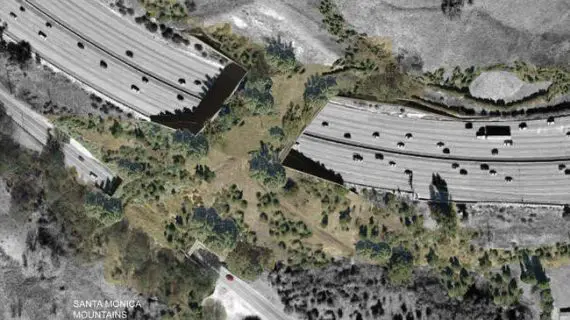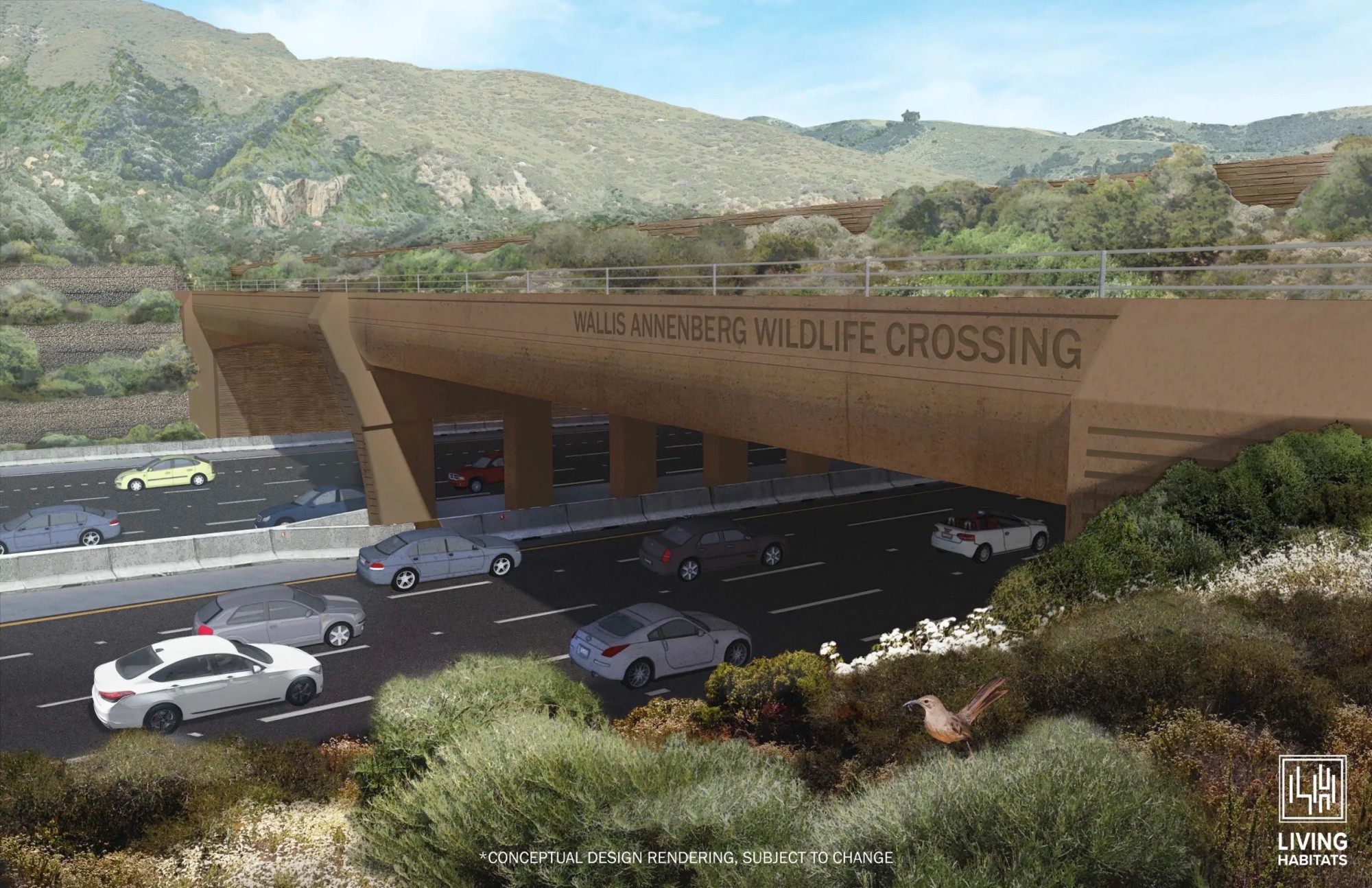The under-construction Wallis Annenberg Wildlife Crossing is set to be the world’s largest wildlife crossing upon completion with a length of 210ft and a width of 165ft. The bridge, the construction of which began in April 2024 with the installation of the first of the more than 80 proposed girders, is being built in Conejo Valley, a region spanning both southeastern Ventura County and northwestern Los Angeles County in Southern California, United States.
The girders are approximately 100-foot-long boxes of reinforced concrete that will serve as the base level of the wildlife crossing. They will help support the structure’s horizontal reach across U.S. Highway 101. Also known as the U.S. Route 101, Highway 101, is a north–south United States Numbered Highway that traverses the states of California, Oregon, and Washington on the West Coast of the United States.
The highway will reportedly be closed overnights in the Liberty Canyon area to allow for the installation of a total of 82 girders weighing between 126-to-140-ton, first the southbound and then the northbound 101 lanes. According to reports it is going to take three to four weeks to install the girders in each direction. The entire project isn’t expected to be complete until early 2025.
Unique features of the Wallis Annenberg Wildlife Crossing
The size of the Wallis Annenberg Wildlife Crossing is reportedly not the only unique aspect about it as it is designed to seamlessly integrate into the mountains, offering big cats, coyotes, deer, lizards, snakes and other creatures a safe way to travel to different parts of the 150,000-acre open territory in the Santa Monica mountains recreation area.
According to Robert Rock, a landscape architect with Living Futures in Chicago who led the bridge design, this nature-centred type of construction makes it unlike other wildlife bridges and underpasses around the world, which are typically made of cement and steel.

According to Rock, the Wallis Annenberg Wildlife Crossing design team included a soil scientist who collected soil samples nearby that are specific to the local trees as well as a mycologist who studied the fungi of the area and how they can help the seamless flow of plants and animals across the overpass.
As both a tool for and a symbol of connection, Rock believes that the world’s largest wildlife crossing will stand as an alluring challenge to future generations to pick up the mantle of design to bridge the gaps elsewhere in our world.
Also Read
PennDOT Begins construction of pedestrian bridge and PECO Energy Utility in Philadelphia
Gordie Howe International Bridge Project to Be Delayed For 10 Months
Cost and funding for the world’s largest wildlife crossing
The Wallis Annenberg Wildlife Crossing project is developed through a public-private partnership. The core partners include Caltrans, the National Park Service, the Santa Monica Mountains Conservancy, the Mountains Recreation and Conservation Authority, the Resource Conservation District of the Santa Monica Mountains, and the National Wildlife Federation.
The cost of implementation of the project is estimated to be US$ 92 million or its thereabouts. Private donors contributed half of the estimated cost with Wallis Annenberg, whom the bridge is named after contributing US$ 26 million and around 6000 other donors contributing the other part of the private donations.

